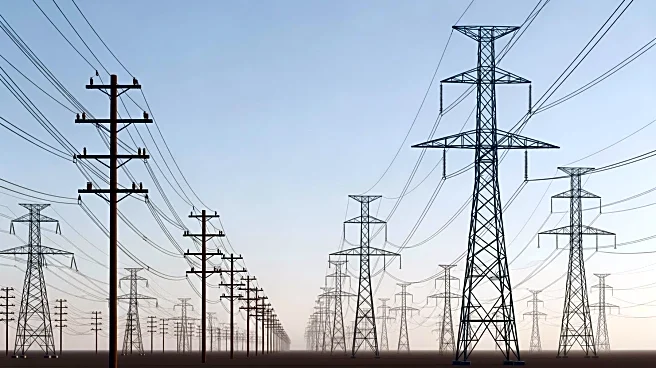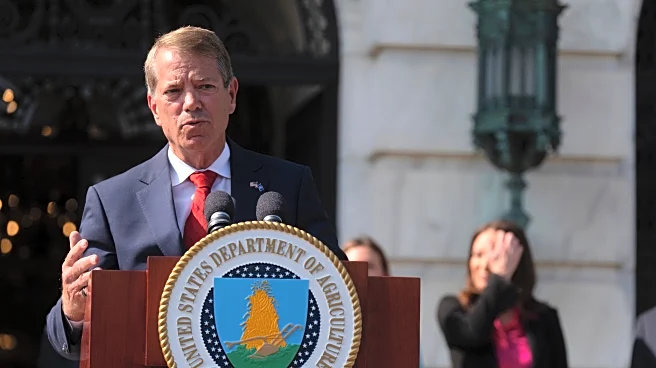What's Happening?
The Federal Energy Regulatory Commission (FERC) has directed the Midcontinent Independent System Operator (MISO) to specify how merchant high-voltage, direct-current transmission projects are integrated
into its transmission planning models. This decision follows a complaint from Invenergy Transmission regarding MISO's handling of the Grain Belt Express project, a 5-GW, 600-kV transmission line planned to run approximately 800 miles from Kansas to Indiana. Invenergy argued that MISO's failure to properly account for the project could lead to duplicative efforts and increased customer rates. FERC's ruling aims to ensure that merchant projects, which do not rely on direct ratepayer support, are considered in transmission plans to avoid inefficiencies and potential cost increases for ratepayers.
Why It's Important?
This decision by FERC is significant as it addresses the integration of merchant transmission projects into regional planning, which can impact the cost and reliability of energy delivery. By including these projects, FERC aims to provide ratepayers with cost savings and reliability benefits, particularly as demand for energy grows due to factors like artificial intelligence. The ruling could influence how future transmission projects are planned and executed, potentially reducing the need for additional infrastructure investments and ensuring that stakeholders have the best information to assess grid needs.
What's Next?
FERC has given MISO 90 days to outline when and how merchant HVDC transmission projects will be incorporated into its planning processes. This includes the MISO Transmission Expansion Plan base cases and possibly sensitivity analyses. MISO's response to this order will be crucial in determining how effectively merchant projects are integrated into future transmission plans, potentially affecting billions of dollars in infrastructure investments. Stakeholders, including state utility regulators and transmission customers, are expected to closely monitor MISO's compliance with FERC's directive.
Beyond the Headlines
The decision highlights the ongoing challenges in balancing regulatory requirements with the need for efficient energy infrastructure development. It underscores the importance of transparency and stakeholder engagement in transmission planning, which can lead to more informed decisions and better outcomes for consumers. Additionally, the ruling may set a precedent for how merchant projects are treated in other regions, influencing national energy policy and infrastructure development strategies.














